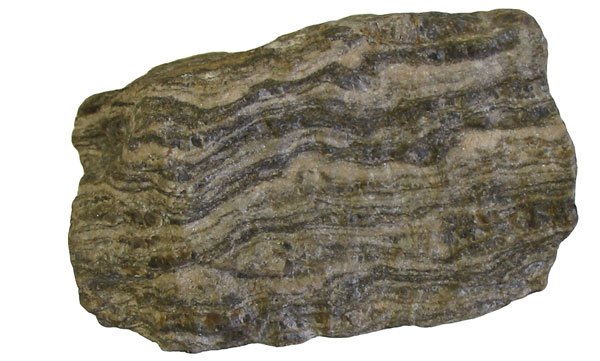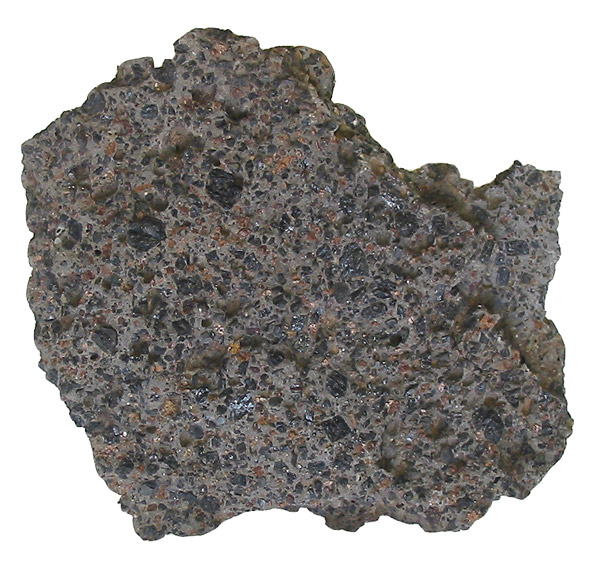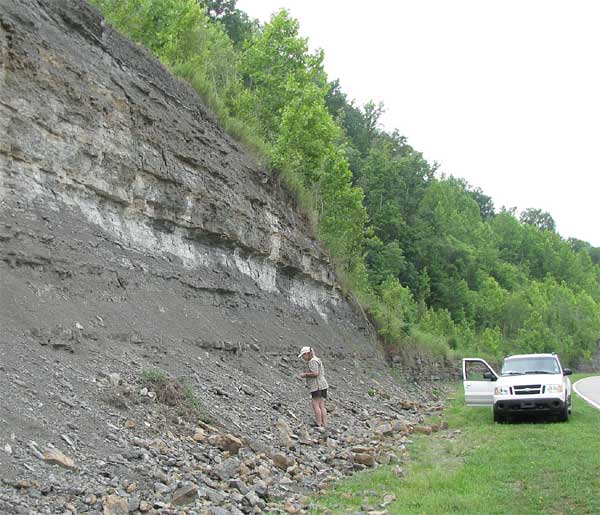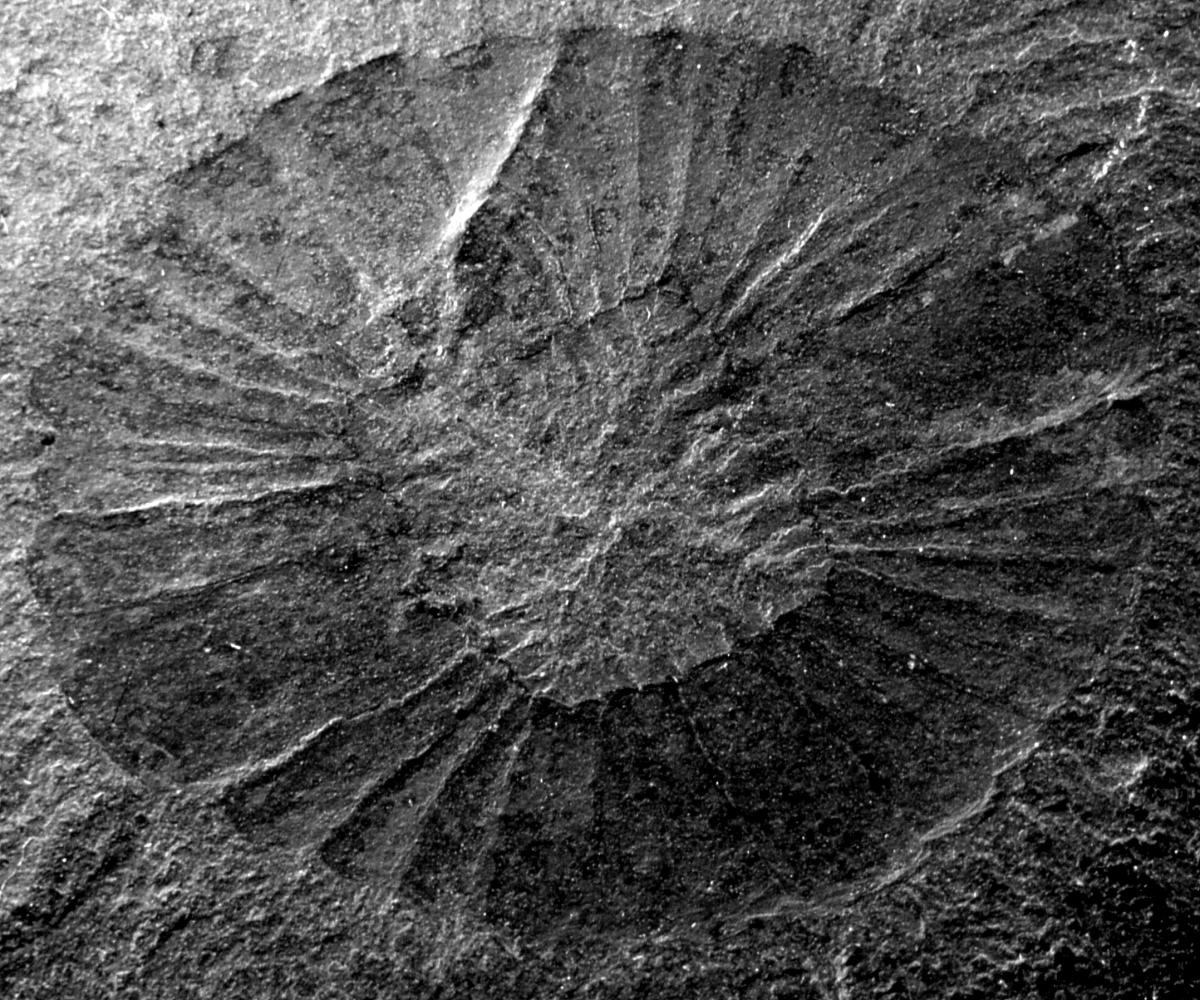Last week, we explored what it takes to become a fossil and what exactly fossils are. Hopefully, you have some appreciation for the relatively rare conditions necessary to become a fossil. But let’s say you beat the odds and die along a floodplain and get buried in sediment before decaying or getting eaten. Is it time to break out the balloons and celebrate? Start designing your cushy museum exhibit? Not quite…you may be on your way to being a fossil, but now you have to be found.
Most fossils are buried in layers and layers of rock representing at least thousands, if not millions (or billions!) of years of Earth’s history. A lot can happen in that time. Anyone remember the rock cycle? As a quick refresher, it’s a model for understanding the processes that convert rocks from one form (sedimentary, igneous, metamorphic) to another. Fossils are almost always found in sedimentary rocks, which are rocks made up of tiny bits of other pre-existing rocks that get compacted and cemented by pressure. Let’s follow the rock cycle to see what can happen to sedimentary rocks and the fossils they may contain.

First, sedimentary rocks can get deformed by heat and/or pressure. Heat and pressure form new rock by altering the mineral composition of existing rock via processes collectively known as metamorphosis (hence the name of the resultant rocks—metamorphic). Metamorphosis often, but not always, happens along plate boundaries. Mountains such as the Himalayas, formed by the  crunching together of plates, are full of metamorphic rocks, for example. (When you rub your hands together, the friction causes heat, right? Imagine the heat generated when tectonic plates rub together!) With enough heat and pressure, the minerals in a pre-existing rock can actually melt forming magma (or lava, if at Earth’s surface). As the magma and lava cool, new crystals form and you get igneous rock.
crunching together of plates, are full of metamorphic rocks, for example. (When you rub your hands together, the friction causes heat, right? Imagine the heat generated when tectonic plates rub together!) With enough heat and pressure, the minerals in a pre-existing rock can actually melt forming magma (or lava, if at Earth’s surface). As the magma and lava cool, new crystals form and you get igneous rock.
Guess what happens when fossils get warped or melted by heat and pressure? Nothing good. Bye-bye fossils.
The other path out of sedimentary rock is via weathering and erosion. Weathering is the breakdown of rock material into smaller pieces. This can happen by chemical means (acid rain “eating” calcium minerals in rock, for example) or by physical means (battering by wind, water, ice, or even plant roots). Erosion occurs when these smaller chunks of rock are moved from place to place, again, usually by water, wind, or ice.
Weathering and erosion are key to finding fossils. In the first post of this series, I introduced the misconception that fossils are everywhere and all you have to do is dig. My correction was that they are actually quite rare and you don’t dig—you look. Paleontology doesn’t take place in fields or forests, it takes place in barren areas where there is exposed sedimentary rock, such as along highway roadcuts where rock has been exposed by blasting, or in the arid American west and southwest, or in the frozen Canadian Arctic. It just isn’t practical to clear overlying vegetation and soil to get to rocks that may or may not have fossils—finding fossils when they are exposed and right under your feet is hard enough. In the HHMI film on Tiktaalik, Dr. Neil Shubin describes the experience of looking for fossils like this: “So how do you find fossils? I pick up a lot of stuff, right? Sometimes it’s just a piece of rock, sometimes it’s bird poop, sometimes it’s a leaf. But occasionally it’s a jaw with teeth in it.”
the arid American west and southwest, or in the frozen Canadian Arctic. It just isn’t practical to clear overlying vegetation and soil to get to rocks that may or may not have fossils—finding fossils when they are exposed and right under your feet is hard enough. In the HHMI film on Tiktaalik, Dr. Neil Shubin describes the experience of looking for fossils like this: “So how do you find fossils? I pick up a lot of stuff, right? Sometimes it’s just a piece of rock, sometimes it’s bird poop, sometimes it’s a leaf. But occasionally it’s a jaw with teeth in it.”
It is only via weathering and erosion that the occasional fossil becomes exposed on the surface and thereby “findable”. But what if a fossil gets to the surface, and no one is there to find it? Well, likely, it gets bashed about, broken up, carried away, and mixed up in loose sediment. Bummer.
So to recap, to be a found fossil, you must
- get buried quickly after death
- have hard parts (in most cases)
- not get deformed or melted over the (usually) millions of years you’re buried
- get exposed on the rock surface
- get found by someone before you are crumbled or carried away.
Not an easy list of tasks. To find Tiktaalik, Dr. Shubin and his team had to find a place where there was exposed rock of the right age, and then they got lucky—really really lucky, because not only were they there to find it, but it was more than just a fish scale or a random bit of detached bone. There was enough of it to be informative. Make no bones about it (ha!)—Tiktaalik is awesome.
 But as awesome as it is, I find myself wondering what else was there? How many different fishapods were there in the Devonian and what did they look like? Will we find them? Are they waiting in sedimentary rocks under a field somewhere, biding their time until they can be uncovered and discovered? Or have they already been exposed, but no one was there to find them? Or maybe they have been found, but there wasn’t enough of them to tell us much. Maybe bits and pieces of them are sitting in a tray in a museum somewhere labeled something like “assorted” (these trays exist, I’ve seen them). Or maybe they've been misidentified, like the creatures of the Burgess Shale, which languished misclassified as members of modern phyla for decades before they were reconsidered and their importance was understood.
But as awesome as it is, I find myself wondering what else was there? How many different fishapods were there in the Devonian and what did they look like? Will we find them? Are they waiting in sedimentary rocks under a field somewhere, biding their time until they can be uncovered and discovered? Or have they already been exposed, but no one was there to find them? Or maybe they have been found, but there wasn’t enough of them to tell us much. Maybe bits and pieces of them are sitting in a tray in a museum somewhere labeled something like “assorted” (these trays exist, I’ve seen them). Or maybe they've been misidentified, like the creatures of the Burgess Shale, which languished misclassified as members of modern phyla for decades before they were reconsidered and their importance was understood.
Given how rare fossils are, and how challenging they are to find, it is amazing that scientists have been able to characterize past ecosystems at all, let along in considerable detail. Every found fossil is like a pixel on an Imax screen of diversity, illuminating a piece of Earth’s vast history and adding to our understanding of geology and evolution. So what do you think? Feeling energized to go out and spend years looking for that next pixel?
Have an idea for a future Misconception Monday or other post? See some good or bad examples of science communication lately? Drop me an email or shoot me a tweet <at>keeps3.

